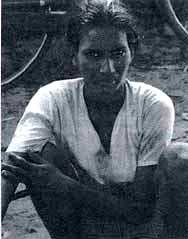The women who are left behind
 WEST ASIAN countries have ample funds at their disposal thanks to their oil reserves, but they suffer a lack of adequate manpower. Men from Kerala are among those who have gone to these countries to work on construction sites, in factories and various other labour-intensive activities. While the phenomenon of male migration from Kerala has been well documented, little attention has been paid to its effects on the families left behind.
WEST ASIAN countries have ample funds at their disposal thanks to their oil reserves, but they suffer a lack of adequate manpower. Men from Kerala are among those who have gone to these countries to work on construction sites, in factories and various other labour-intensive activities. While the phenomenon of male migration from Kerala has been well documented, little attention has been paid to its effects on the families left behind.
In The Absence of Their Men is based on a study conducted by Leela Gulati in the villages of Alakad and Bhimapally in Kerala. Gulati describes how families sell their possessions or take loans to send their men abroad where they will find better-paying work. Loans are given willingly because the lenders are assured of its return and know the migrant will help their sons and sons-in-law also to migrate. And it is a fact that in a family where one man has migrated, there are others who have followed.
The main focus is, however, on the women and how they manage "in the absence of their men". The book contains autobiographical profiles of 10 such women. The women talk of how they cope in various situations. They write letters, pay back loans, operate bank accounts, keep household accounts, bring up their children and look after the family. Some women even start small businesses of their own with which they
occupy themselves. All this is achieved with the money sent back by the men. Interestingly, though many of the women were illiterate before their men left, the author observes they soon gain working knowledge. Another feature is an increase in the awareness of the women. They begin to have some knowledge of world affairs. Women who are themselves illiterate make it a point to send their children to school, going to the extent of arranging special tuitions. They make it a point to take greater care of their family's health, many get themselves sterilised to prevent the family increasing further.
Gulati writes simply and directly, and her book will be useful for those involved in women's issues, migration studies, economics, sociology and demography.
Related Content
- Advancing gender equality in Asia and the Pacific in the context of climate change
- Bridging the gender digital divide: challenges and an urgent call for action for equitable digital skills development
- Improving social protection portability for migration-affected children: spotlight on Chhattisgarh
- Gender-responsive digitalization: a critical component of the COVID-19 response in Africa
- Africa SDG Index and Dashboards Report 2020
- The Sustainable Development Goals Report 2020
